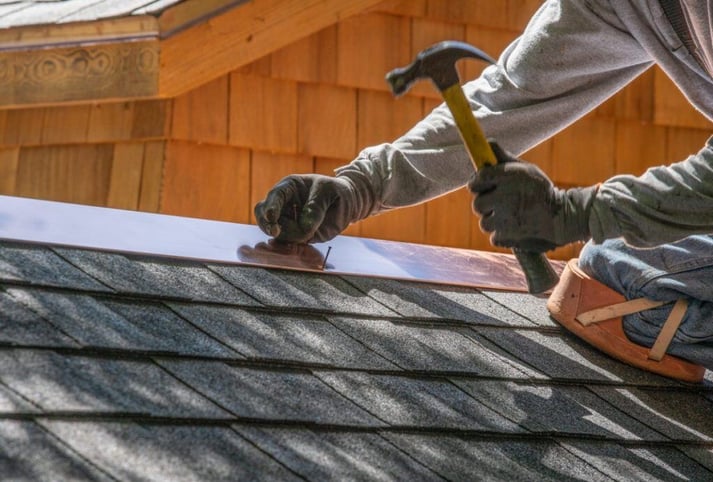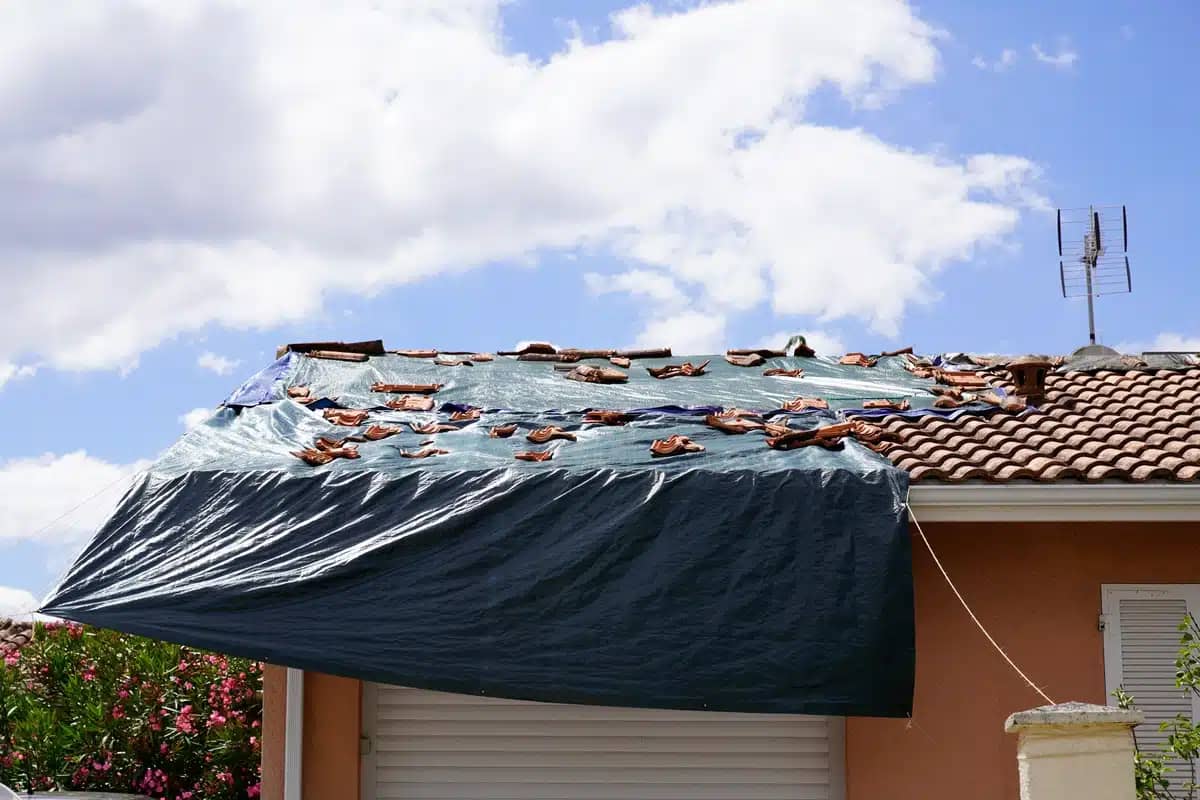When disaster strikes Springdale and surrounding areas of Northwest Arkansas, the last thing you want to worry about is a damaged roof. Yet, for many homeowners, emergency roof repair becomes a pressing issue following severe weather or unexpected damage. Understanding how to handle such situations can save you:
- Time
- Money
- A great deal of stress
This guide will walk you through everything you need to know about emergency roof repair, from identifying damage to implementing temporary fixes and knowing when to call in the professionals.
Why Immediate Action is Crucial
A damaged roof can lead to a multitude of problems, including water damage, structural issues, and mold growth. The longer you wait to address the problem, the worse it can get. Here are some immediate risks associated with a damaged roof:
- Water Damage: Leaks can lead to water staining, wood rot, and even damage to electrical systems.
- Structural Issues: Prolonged exposure to water can weaken the structural integrity of your home.
- Mold and Mildew: Moist environments are breeding grounds for mold and mildew, which can affect indoor air quality and cause health problems.
Taking quick action can help mitigate these risks and protect your home.
Identifying Roof Damage

The first step in emergency roof repair is identifying the damage. Here are some common signs that your roof needs immediate attention:
Visual Inspection
- Missing or Damaged Shingles: Shingles that are cracked, curled, or completely missing can expose your roof to the elements.
- Sagging Roofline: A sagging roofline is a sign of serious structural issues and needs immediate attention.
- Water Stains on Ceiling: Discoloration or water stains on your ceiling indicate that water has penetrated your roof and is leaking into your home.
- Debris on Roof: Fallen branches or other debris can cause damage to your shingles and roof structure.
Attic Inspection
- Water Leaks: Check for signs of water leaks in your attic, such as wet insulation or puddles.
- Daylight Through Roof Boards: If you can see daylight through the roof boards, it means there are gaps that need to be sealed immediately.
Immediate Temporary Fixes

Once you’ve identified the damage, the next step is to implement temporary fixes to prevent further issues until professional help arrives. Here are some quick and effective temporary solutions:
1) Tarping the Roof
One of the most effective temporary solutions is to cover the damaged area with a tarp. Here’s how to do it:
- Choose the Right Tarp: Make sure you use a heavy-duty tarp that is large enough to cover the damaged area.
- Secure the Tarp: Use nails or screws to secure the tarp to the roof. Make sure the edges are tightly secured to prevent wind from lifting the tarp.
- Weigh Down the Tarp: Place heavy objects like bricks or sandbags around the edges of the tarp to keep it in place.
2) Applying Roofing Cement
For smaller leaks or cracks, roofing cement can provide a quick fix. Here’s how to apply it:
- Clean the Area: Remove any debris or loose shingles from the damaged area.
- Apply Roofing Cement: Use a putty knife to apply a generous amount of roofing cement to the crack or hole.
- Smooth the Surface: Smooth out the roofing cement to ensure it covers the entire damaged area.
3) Using Roofing Tape
Roofing tape is another effective temporary solution for minor leaks. It is waterproof and can be applied directly to the damaged area. Here’s how to use it:
- Clean the Area: Remove any dirt or debris from the damaged area.
- Cut the Tape: Cut a piece of roofing tape that is large enough to cover the crack or hole.
- Apply the Tape: Press the tape firmly onto the damaged area, making sure there are no air bubbles.
When to Call the Professionals
While temporary fixes can provide immediate relief, it’s essential to call a professional roofer for a permanent solution. Here are some signs that you need professional help:
Extensive Damage
If the damage covers a large area or involves multiple issues such as missing shingles, leaks, and structural damage, it’s best to call in the experts.
Structural Issues
If you notice signs of structural damage such as a sagging roof or compromised roof supports, it’s crucial to get professional help immediately.
Persistent Leaks
If you have tried temporary fixes but still notice persistent leaks, it’s time to call a professional roofer to assess and repair the damage.
Complex Roofing Systems
If your home has a complex roofing system or multiple layers of roofing material, it’s best to leave the repairs to professionals who have the expertise and equipment to handle such complexities.
Choosing the Right Roofing Contractor: 5 Tips

Choosing the right roofing contractor is crucial for ensuring quality repairs. Here are some tips for finding a reliable roofing contractor:
1) Check Credentials
Make sure the contractor is licensed and insured. Ask for their license number and verify it with your local licensing authority.
2) Read Reviews
Check online reviews and ratings on platforms like Google, Yelp, and the Better Business Bureau. Look for contractors with positive feedback and a good reputation.
3) Get Multiple Quotes
Get quotes from at least three different contractors to compare prices and services. Make sure the quotes include a detailed breakdown of the costs.
4) Ask for References
Ask the contractor for references from previous clients. Contact these clients to ask about their experience and satisfaction with the contractor’s work.
5) Review the Contract
Before signing a contract, make sure it includes all the details of the project, including the scope of work, timeline, materials, and payment terms.
Preventing Future Roof Damage
Once your roof is repaired, it’s essential to take steps to prevent future damage. Here are some tips for maintaining your roof:
- Regular Inspections: Conduct regular inspections of your roof, especially after severe weather. Look for signs of damage such as missing shingles, cracks, and leaks.
- Clean Gutters: Clogged gutters can cause water to back up and damage your roof. Make sure to clean your gutters regularly to prevent blockages.
- Trim Overhanging Branches: Overhanging branches can damage your roof during storms. Trim any branches that are close to your roof to prevent them from falling and causing damage.
- Maintain Proper Ventilation: Proper ventilation helps prevent moisture buildup in your attic, which can lead to mold growth and roof damage. Make sure your attic has adequate ventilation.
- Address Issues Promptly: If you notice any signs of roof damage, address them promptly to prevent further issues. Small problems can quickly escalate into major repairs if left unattended.
Understanding Roof Insurance Claims
In the event of significant roof damage, you may need to file an insurance claim. Understanding the claims process can help you get the coverage you need for repairs.
Review Your Policy
Start by reviewing your homeowners’ insurance policy to understand what is covered. Most policies cover damage from events like storms, hail, and wind, but may not cover damage from wear and tear or lack of maintenance.
Document the Damage
Take photos and videos of the damage to provide evidence for your insurance claim. Make sure to document both the exterior and interior damage.
Contact Your Insurance Company
Notify your insurance company of the damage as soon as possible. They will guide you through the claims process and may send an adjuster to assess the damage.
Get Repair Estimates
Get estimates from reputable roofing contractors to determine the cost of repairs. Provide these estimates to your insurance company as part of your claim.
Keep Records
Keep detailed records of all communication with your insurance company, including phone calls, emails, and letters. Also, keep copies of all documents related to your claim, such as estimates and receipts.
The Role of Technology in Roof Repair
Advancements in technology have made roof repair more efficient and accurate. Here are some ways technology is transforming the roofing industry:
- Drones: Drones are increasingly being used for roof inspections. They provide a safe and efficient way to assess roof damage without the need for ladders or scaffolding.
- Thermal Imaging: Thermal imaging cameras can detect areas of heat loss and moisture buildup in your roof. This technology helps identify hidden issues that may not be visible to the naked eye.
- Roofing Software: Roofing software allows contractors to create detailed estimates, track projects, and communicate with clients. This technology streamlines the repair process and improves customer satisfaction.
- Sustainable Roofing Materials: Advancements in roofing materials have led to more sustainable options such as solar shingles and cool roofs. These materials not only reduce your carbon footprint but also improve energy efficiency and reduce cooling costs.
Emergency Roof Repairs With a Professional Roofer
Emergency roof repair can be a stressful and overwhelming experience for homeowners. However, by understanding the steps involved and taking immediate action, you can minimize damage and protect your home. Remember to implement temporary fixes, call in professional help when needed, and take preventive measures to maintain your roof’s integrity.
If you need expert assistance with your roof repair, don’t hesitate to reach out to the trusted team at Pinnacle Roofing. Our emergency roof repair services are designed to give you the peace of mind you deserve!






